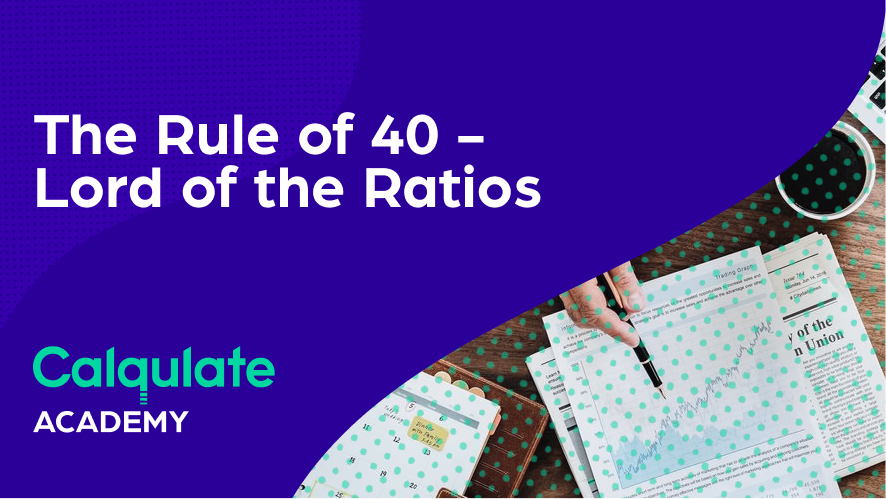Building a SaaS company is no easy feat. Building and maintaining a healthy SaaS company can sometimes feel like an uphill battle. You might be wondering how to determine what’s a healthy benchmark for many of your metrics, and stressing over which KPIs investors are looking at.
When you’re trying to determine the health of your SaaS company and building reports for investors, it’s easy to feel overwhelmed by the amount of information you’ll find on:
- How to build a successful SaaS company
- What a successful SaaS company looks like
- Go-to-market success for SaaS companies
- And more...
It’s almost like running a quick Google search about a health symptom you’re experiencing. It can often leave you feeling worse off than when you began your search and a lot less enlightened.
We’re here to tell you that the key thing to remember when it comes to the health of your SaaS company is:
‘The SaaS rule of 40’
The SaaS rule of….what?
The SaaS rule of 40, also known as 40% rule, is a rule of thumb for evaluating the health of your business. The formula is simple:
Growth rate + profit rate = Growth Profit ratio (GP ratio)
In a healthy company, when you add them together, your GP ratio should add up to at least 40%. Let’s take at look at the calculations for the two metrics that matter in your GP ratio:
Growth rate
There are many ways to measure growth. The easiest is to use your monthly recurring revenue (MRR) growth and do a year-over-year (YoY) calculation. Here’s the formula to calculate your YoY growth:
(New value - First value) / First value x 100% = Growth percentage.
In order to determine your YoY MRR growth rate, you need to know:
First value: MRR November 2019 = $100
New value: MRR November 2020 = $140
($140 - $100) / $100 x 100% = 40%
In this case, the YoY MRR growth is 40%
Profit
Similarly, there are various indicators such as EBITDA, operating income, net income, cash flow or even something else to measure profit. The most commonly used metric for SaaS companies is EBITDA – Earnings Before Interest, Taxes, Depreciation, and Amortization.
EBITDA is used to measure the company’s operational profitability and is widely accepted as a performance indicator. The formula for EBITDA is fairly straightforward and only requires information that is found on a company’s cash flow statement:
Operating profit + Amortization Expense + Depreciation Expense = EBITDA
To know your profit rate, use the YoY calculation provided in the above section.
How does the SaaS Rule of 40 work in practice?
Here’s an example:
|
Growth rate |
Profit rate |
GP ratio |
|
10% |
30% |
40% |
|
40% |
0% |
40% |
|
60% |
-20% |
40% |
|
50% |
-30% |
20% |
|
30% |
20% |
50% |
Here’s what it means:
- If your company is growing at 10%, you should be generating a profit of 30% to be considered healthy.
- If your company is growing at 40% you could be generating a profit of 0% and still be considered healthy.
- If your company is growing at 60%, you could lose 20% in profit and all is still fine.
- If your company is growing at 50% but losing a profit of 30% then something needs to be improved. For example, consider Increasing growth by 20% or reducing CAC to increase profitability.
- If your company is growing at 30% and generating a profit of 20% then you are onto something – that’s great!
As long as you have a GP ratio of at least 40%, you have a healthy business.
Conclusion
Many early SaaS companies have a GP ratio that exceeds 100% or more. Larger values often imply that the business is growing quickly and is generating lots of profit. That’s an attractive attribute for investors. But many SaaS companies find themselves unable to sustain a 40% metric.
To sum it up, the ‘SaaS rule of 40’ shows the relationship between a company’s growth rate and burn rate, and is a solid indicator of its health. Consequently, it’s also a metric that investors use to determine whether to invest in a company.
Happy Calqulating!

